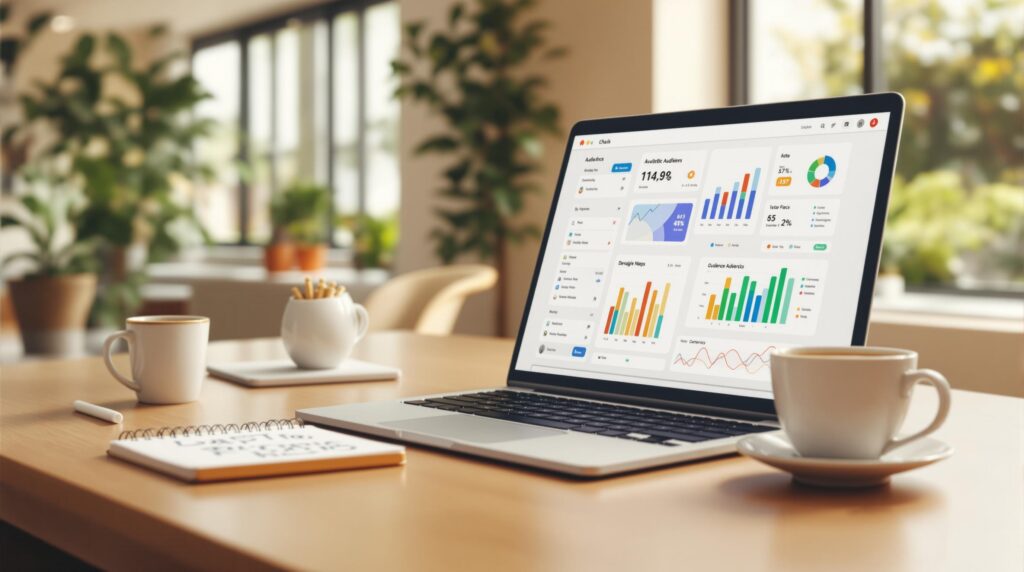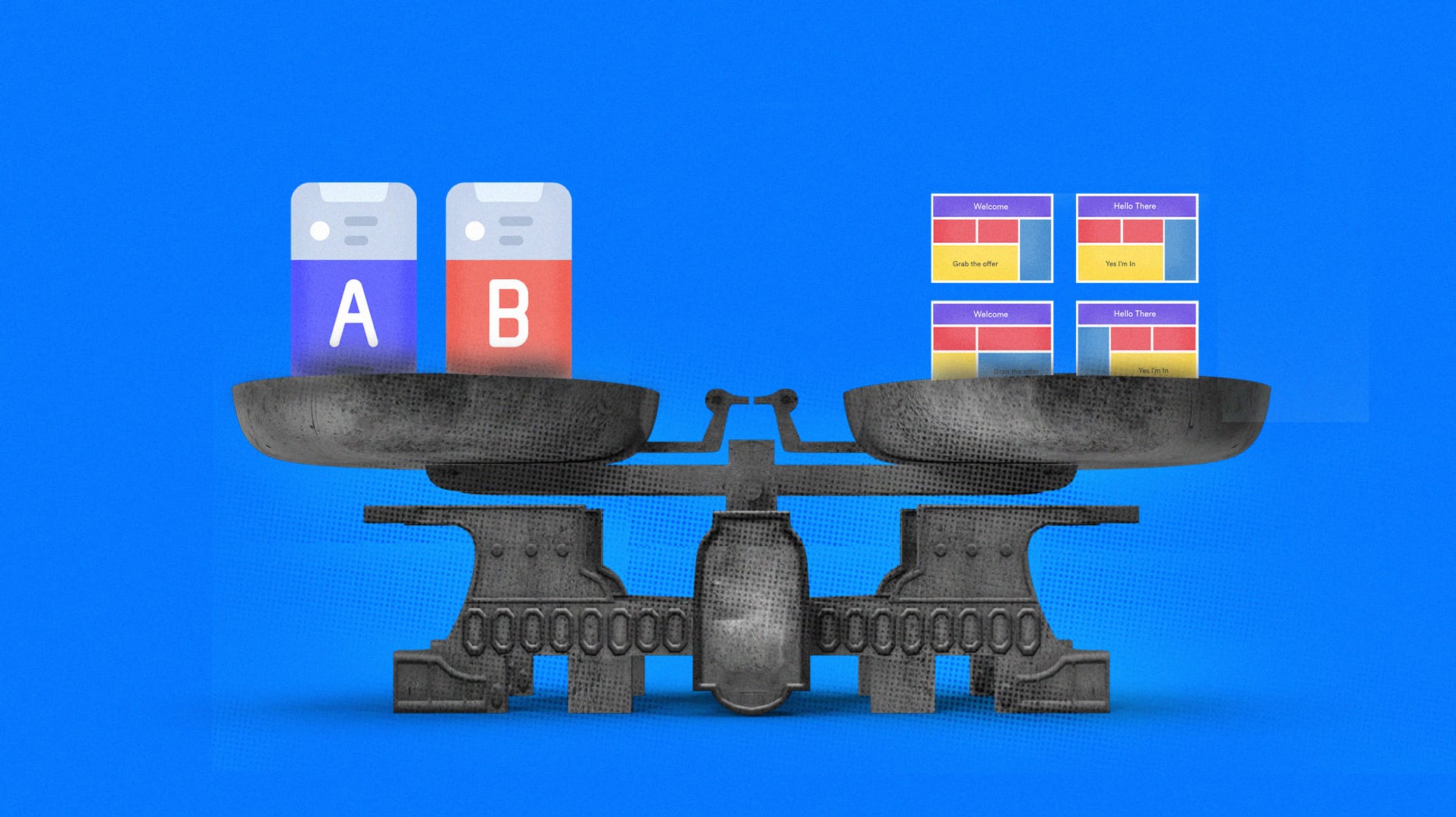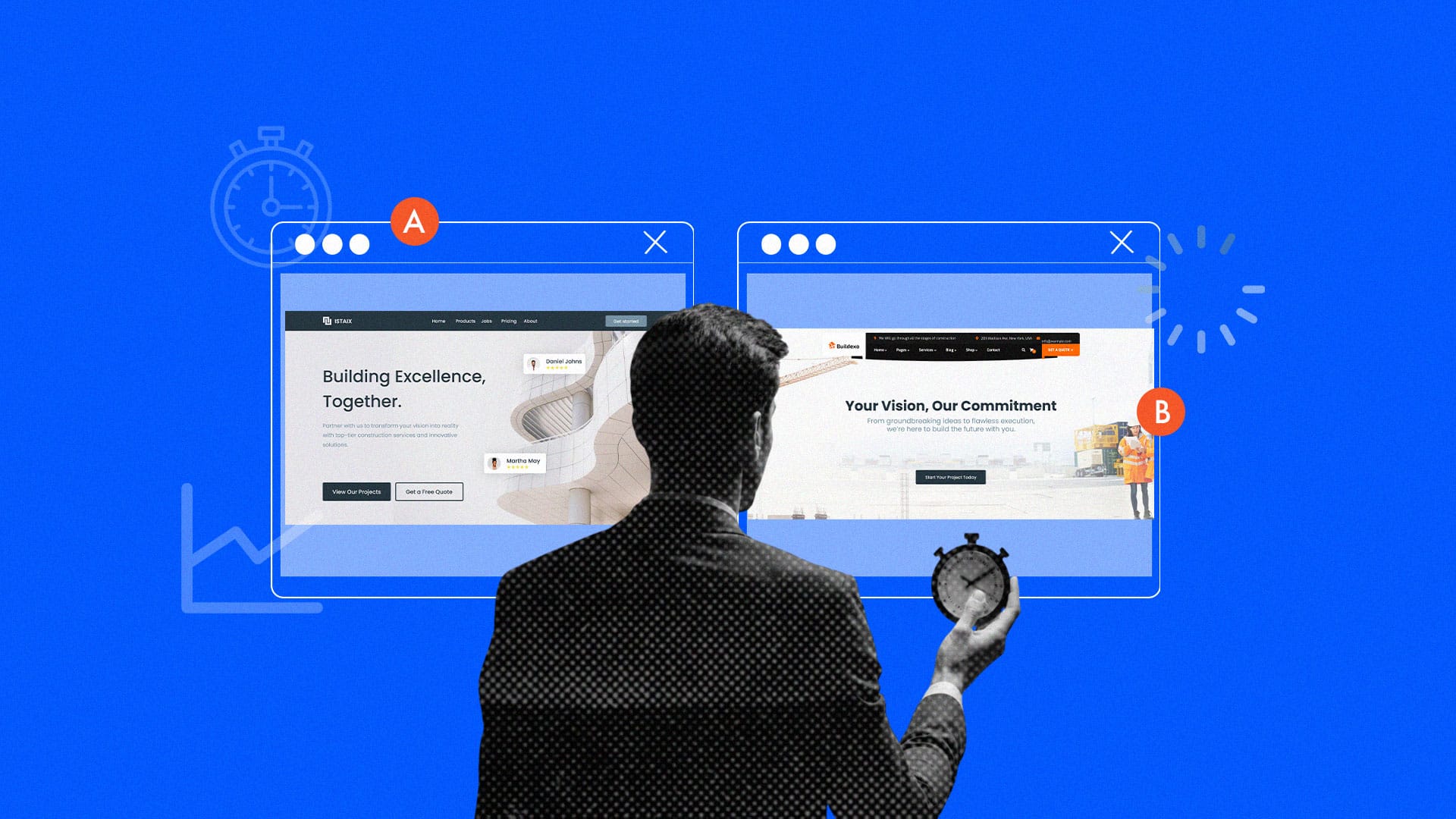Audience insights help you understand user behavior, segment customers, personalize experiences, test strategies, and act on feedback. Companies like Smoov and Rev have boosted conversions by up to 60% using these methods. Here’s a quick breakdown:
- Track behavior: Use tools like heatmaps and session recordings to identify issues like high bounce rates or confusing navigation.
- Segment customers: Group users by behavior, demographics, or purchase stage to tailor content and offers.
- Use AI: Predict customer needs and personalize experiences in real time to boost sales.
- Run tests: A/B test website elements like CTAs and layouts to find what works best.
- Act on feedback: Combine customer feedback with behavior data to prioritize improvements.
These strategies help businesses grow without spending more on ads. Want to learn how? Keep reading.
How To Improve Your Conversion Rate (With Examples)
1. Track and Analyze User Behavior
Understanding how users interact with your site can help pinpoint obstacles affecting conversions.
Monitor Key User Metrics
Keeping an eye on important user metrics can provide insights into your conversion funnel. Metrics like bounce rates, session duration, page load speed, and exit rates are great indicators of user engagement. For example, Rev used Google Analytics to identify high bounce rates and slow loading times on their mobile transcription landing page. Once they fixed these issues, their conversions jumped by 20%.
Metrics worth tracking include:
- How many visitors leave without interacting
- Time spent on critical pages
- The impact of site performance on engagement
- Pages where users drop out of your funnel
Using visual tools can make these insights even clearer.
Use Visual Behavior Maps
Visual maps can show you exactly how users interact with your site. HongKiat Lim, founder of hongkiat.com, shared:
"UXsniff is easy to use; it only requires a small amount of code to be added to your website. This tool, particularly the heatmaps, helped us identify where users were dropping off on a landing page and what sections needed to be removed or improved."
These tools can uncover:
- Click hotspots to see where users interact most
- Scroll depth to measure content engagement
- Mouse movement patterns to highlight focus areas
- Form field interactions to identify barriers to completion
Address Common Exit Points
Finding and fixing areas where users leave can significantly boost conversions. Take MathElf’s signup process, for example. By analyzing session recordings, they realized users were getting stuck at an optional referral code field – some entered random codes, while others left to search for valid ones. Removing this field increased signup completion by 20%.
Another example involved an online store using UXsniff. Session recordings revealed a long-standing issue where cart items disappeared when new users created accounts during checkout. Fixing this problem removed a major barrier.
Barron Caster, Director of Growth, highlights the value of these tools:
"Learning tools are important as they answer key questions: the ‘what’ and ‘how’ of user behavior."
2. Create Targeted Customer Segments
Dividing your audience into specific groups allows you to deliver more relevant experiences, which can lead to better conversion rates. In fact, 72% of marketers use customer data and segmentation to improve their results. Let’s look at some strategies to make your segmentation efforts more effective.
Choose the Right Segment Types
The first step in successful segmentation is picking criteria that align with your goals. As Jon Miller puts it:
"Knowing who your customers are is great but knowing how they behave is even better"
Here are some impactful ways to segment your audience:
- Behavioral: Look at purchase history, browsing habits, and engagement patterns.
- Demographic: Take into account factors like age, location, occupation, and income.
- Customer Status: Identify groups such as new users, repeat buyers, high-value customers, or inactive users.
- Purchase Stage: Focus on segments like cart abandoners or recent buyers.
For example, Comcast crafted a special offer for Gen Z students, bundling free HBO and Amazon Music. Cheri Davies, Senior Executive of Acquisition Marketing at Comcast, said:
"Our new gated student offer has taken off"
This tailored strategy significantly boosted both site traffic and conversions.
Automate Your Segmentation Process
As your business grows, manual segmentation becomes harder to manage. Automation tools can help you handle large data sets and sort customers into relevant groups. To implement automated segmentation:
- Import customer contact details and map them to custom attributes.
- Use location-based filters to personalize website experiences.
- Set up automated triggers based on user actions.
- Combine multiple filters to pinpoint specific customer groups.
Research shows that segmented email campaigns see a 14.32% higher open rate and a 100.95% higher click rate compared to non-segmented ones.
Personalize Content for Each Segment
Once your segments are defined, tailor your content to match their needs:
- Welcome new customers with helpful information and first-purchase discounts.
- Reward high-value customers with exclusive perks or early access to products.
- Send cart abandoners reminder emails with special incentives.
- Adjust content language, currency, and cultural references based on location.
Nike showcased the power of segmentation with their "Nothing Beats A Londoner" campaign, which featured local stars and landmarks. The campaign went viral on YouTube and caught the attention of major media outlets, proving that well-targeted content can amplify your marketing efforts.
Companies that analyze customer segments have reported sales increases of up to 760%, making segmentation a game-changer for boosting conversions.
sbb-itb-22854bb
3. Use AI to Predict and Personalize
AI tools are changing the way businesses understand and respond to customer needs. With 73% of customers expecting more personalized experiences as technology evolves, leveraging AI is no longer optional – it’s essential.
Forecast Customer Behavior
AI can analyze customer data to reveal patterns that drive smarter decisions. Businesses using predictive analytics often see a 15% boost in revenue and a 20% ROI. To predict customer behavior effectively:
- Combine data from all customer interactions
- Use AI models to detect trends
- Track real-time customer activities
For instance, Dapper Labs used AI to link specific customer support issues to the users facing them. This helped their engineering team prioritize fixes, improving the overall user experience. These insights pave the way for real-time, tailored interactions.
Deliver Personalized Content in Real-Time
Personalization is a game-changer. Companies offering tailored experiences can see 40% more revenue compared to those that don’t. Diego Alamir, Author, highlights this point:
"Analyzing behavior creates authentic personalized experiences"
Take an online marketplace as an example: by integrating real-time browsing data with its recommendation engine, it improved recommendation accuracy by 40% and increased sales by 15%. Strategies to achieve this include:
- Adjusting content based on user behavior
- Offering customized recommendations
- Tailoring calls-to-action for specific audience segments
These real-time tweaks can significantly enhance sales and customer satisfaction.
Turn Predictions into Sales
Using AI to personalize experiences is only the beginning – turning those insights into sales is where the real value lies. Existing customers are 60%-70% more likely to make a purchase than new ones. For example:
- Trendy Butler used churn prediction models to identify at-risk subscribers. By sending targeted marketing messages, they improved retention by 20%.
- A fintech company tested AI models for cross-selling financial products, achieving a 12% higher conversion rate compared to a control group.
To get the most out of AI-driven sales:
- Continuously refine predictions and automate responses
- Use insights to guide strategic decisions
- Test and improve personalization efforts regularly
Don’t forget: 95% of customers say trust influences their loyalty and buying decisions. Be transparent about how you use customer data to build trust and create better experiences. These AI-driven insights can help fine-tune your marketing strategy for even greater success.
4. Run Data-Based Tests
Testing your website’s elements is key to increasing conversions. Studies show that using data-driven testing can lead to a 6%–10% revenue boost. Here’s how you can fine-tune your approach to get better results.
Compare Page Versions
A/B testing is a straightforward way to see which webpage version works best. By comparing two versions, you can pinpoint what resonates with your audience.
Here’s what to test:
- Call-to-action buttons
- Headlines and copy
- Page layouts
- Form designs
- Visual elements
Don’t forget to factor in:
- Basic demographics
- User intent
- Customer lifecycle stage
- Behavioral patterns
Tools designed for testing can help simplify and enhance this process.
Automate Testing with AI
AI-powered tools make testing even smoother. They monitor visitor behavior, run experiments, and apply changes automatically. GrowthApp explains it best:
"Most CRO tools give you data, we give you results. GrowthApp doesn’t just analyze, it runs real-time experiments and applies winning changes automatically."
With AI, you get:
- Real-time execution
- Automatic updates
- Continuous learning
- Less manual work
Review and Update Tests
Testing isn’t a one-and-done process. Visitor preferences change, so it’s essential to regularly review and adjust your tests. Monitor outcomes, analyze the data, and document what works.
While 68% of marketers still use rule-based testing, predictive personalization powered by machine learning offers a more flexible solution. It adapts your website in real time to match visitor needs.
The best approach combines targeted A/B testing for specific questions with personalized experiences for different audience segments. Regular updates ensure your strategy stays relevant and effective.
5. Act on Customer Feedback
Customer feedback is an essential tool for improving conversions. By combining what customers tell you with their actual behavior, you can make smarter decisions that lead to better results.
Gather Direct Feedback
Collecting feedback from your audience is key. Studies show that acting on customer feedback can improve user experience and refine products, which often translates into higher conversion rates.
Some effective ways to gather feedback include:
- Customer Satisfaction Surveys (CSAT): These help measure how happy your customers are and highlight areas that need improvement.
- Net Promoter Score (NPS): Use this to gauge customer loyalty and see how likely they are to recommend your product or service.
- Live Chat: A great way to capture real-time feedback during customer interactions.
"Companies should not view the absence of feedback as a sign of satisfaction. The true enemy is indifference." – Esteban Kolsky, CEO of ThinkJar
Combine Feedback With Behavior
To get the full picture, match customer feedback with behavioral data. This helps you understand not just what customers are saying but also what they’re doing. Tools like text analysis can help identify key themes, sentiment, and recurring problems.
Pair this with behavioral insights that show:
- What actions users take (quantitative data)
- How they interact with your platform (qualitative details)
- Where they experience issues
Make Data-Driven Updates
Turn feedback into action by following these steps:
-
Centralize Your Data
Build a single dashboard that brings together:- Survey results
- Live chat transcripts
- User behavior metrics
- Customer segmentation data
-
Focus on Key Issues
Prioritize fixes or changes that:- Show up frequently in feedback
- Impact critical business goals
- Affect multiple customer segments
- Follow clear, identifiable patterns
-
Test and Implement
Before rolling out major updates:- Use A/B tests to confirm your ideas
- Track how changes affect conversions
- Document what works for future reference
"If I had asked people what they wanted, they would have said faster horses." – Henry Ford
Conclusion
Combining user behavior analysis, targeted segmentation, and AI-powered personalization can lead to impressive conversion boosts. These methods allow businesses to achieve growth without increasing marketing budgets, as shown by companies that have seen measurable success through data-focused strategies.
For example, automated tools have helped businesses generate up to $230,000 in extra revenue from their existing traffic. This highlights how leveraging data insights can make a real difference. Tucker Cohen, CEO of Smoov, shares his experience:
"We don’t have time to run constant A/B tests, and honestly, we didn’t know where to start. GrowthApp does it all automatically"
These approaches prove that understanding your audience and tailoring the experience is often more effective than simply spending more on ads.



